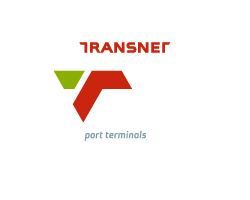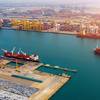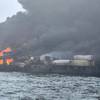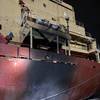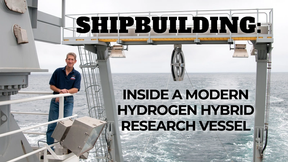Cape Town Terminal Welcomes End Of Windy Season
[CAPE TOWN – 31 March 2011] The end of March should see a subsiding of the vicious south-easterly wind that has plagued the Cape and put Cape Town container terminal under serious pressure to keep cargo moving over the last few months.
Just the first three months of 2011 have already seen 62 separate wind stoppages totalling 551 hours at the terminal – more than half of 2010’s full total of 964 hours lost to wind over 83 separate occasions.
Around nine days or 219 hours were lost to wind in January, 220 hours in February and 101 in March.
Velile Dube, Terminal Executive for the Western Cape region terminals, said, “We thought December 2010 was a bad month, but January and February 2011 brought us the very worst conditions with wind speeds of between 120km/h and 140km/h, and gusts up to 160km/h.
“The wind continued non-stop and totally halted operations for nine days combined in February. This meant vessels were seriously delayed. Once the terminal started operating again and the stacking yard was opened we found we were unable to process trucks quickly enough because they all started coming through at once,” he said.
The terminal had to schedule system downtime every four hours so that its operating system would not crash under the pressure.
Cape Town’s windy season runs from September to March and coincides with the peak period for refrigerated (‘reefer’) cargo being exported at the harbour.
Data reflects the wind is increasing year by year and blowing for longer periods. The worst months in 2010 were March with 145 hours lost, followed by January 2010 with 133 hours lost.
Safe operation
For safety reasons, port operations are stopped when the wind reaches 80km/h.
Rubber-Tyred Gantry (RTG) cranes are currently limited beyond 72km/hour, ship-to-shore (STS) cranes beyond 80km/hour, while straddle carriers can operate safely up to 90kph.
To maintain continuity Transnet Port Terminals has been running a hybrid operation in the terminal, using both the new RTGs and the old straddle carriers to transfer containers from vessels into the stacking yard.
When the wind becomes prohibitive cargo is diverted to areas of the stacking yard still being serviced by straddle carriers, which have a higher wind threshold.
The terminal has also implemented tandem lifting and dual cycle operations, where containers are discharged and loaded simultaneously from a vessel using ship-to-shore cranes.
Planning for productivity
Dube said management was talking to customers as regularly as possible to plan vessels better and encourage higher productivity. This helped eliminate confusion about terminal closures and any amendments to free storage periods because of the delays.
“Our recovery when the wind subsides includes booking staff on longer 12 hour shifts for limited periods so that we increase our manpower and can operate more equipment. This obviously improves both our landside and waterside performance,” he said.
The terminal also diverts vessels to the neighbouring agricultural and roro (agri-roro) section of the terminal, which is less exposed to wind gusts and can still operate even when the container terminal has ceased operation.
Outside of these wind bound periods the facility has maintained good productivity. It attributes this to better planning and streamlining of operations, as well as improved employee skills as operators become more proficient in handling the new cranes procured as part of the terminal’s five year capacity creation project.
For the last three months, the terminal has achieved an average of 25 GCH against a target of 26GCH, with performance peaking at 26 GCH in December 2010 and January 2011. GCH is an internal measure used to calculate productivity per crane, which counts the number of moves per crane per hour.
During the same period, the Ship Working rate per Hour (SWH) has averaged at 47 SWH against a target of 44 SWH. SWH is the number of containers that have been moved by the number of cranes working on the vessel in one hour. It is a key performance indicator for shipping lines.
“We are sympathetic to the frustrations of industry and have done as much as we can in very difficult, very unusual circumstances.
“With the end of the windy season approaching our focus will now be on improving productivity and giving shipping customers the seamless, high quality service they expect,” said Dube.
Source: www.transnetportterminals.net



